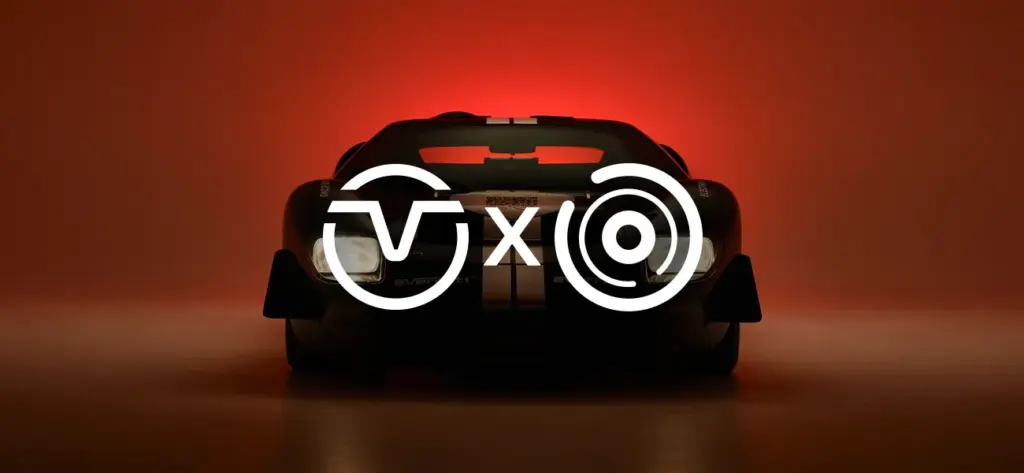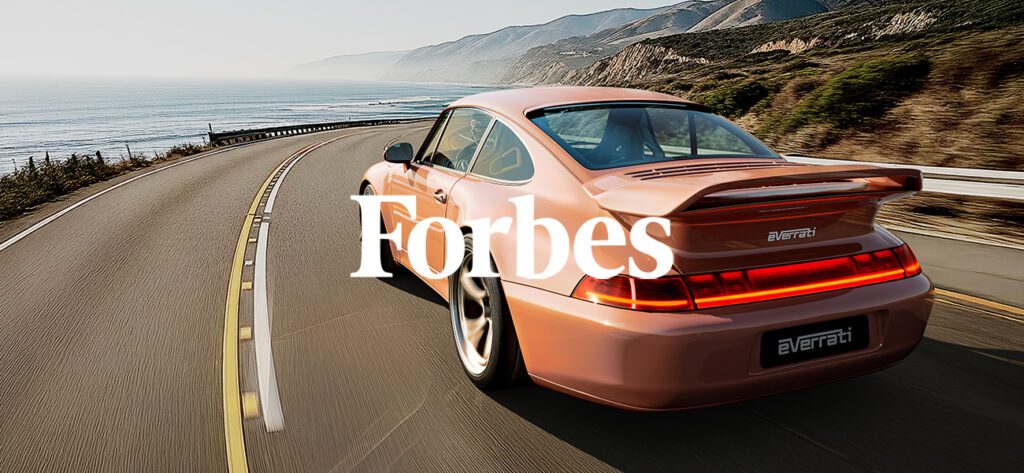Old-school off-road iron meets state-of-the-art powertrain technology.
Everrati’s business model is simple: Take an iconic car—a Porsche 911, a Ford GT40, a pagoda-roof Mercedes-Benz 280SL, for example—and replace the internal combustion powertrain with an electric one. You get the style and savoir-faire of owning a classic car without all the hassle of looking after the oily bits. And you can also get a car that’s demonstrably nicer to drive than the original. The Everrati Land Rover Series IIA is a case in point.
Everrati co-founder Justin Lunny is a lifelong car enthusiast and entrepreneur who wanted to do something interesting after selling his last fintech business. His lightbulb moment came watching newly married Harry and Meghan, the Duke and Duchess of Sussex, drive off to their wedding reception in an electric-powered E-Type roadster that had been engineered and built by Jaguar Classic.
“I saw I could combine my desire to get involved in a clean technology business with beautiful cars,” Lunny says. That led to the establishment of British-based Everrati in 2019 in partnership with former Mercedes-Benz UK executive Nick Williams, and the creation of its first electric-powered classic, a restomodded 964-series Porsche 911.
The short-wheelbase Land Rover Series IIA is no beauty. But perfectly proportioned, honestly utilitarian design—which remained fundamentally unchanged for almost 60 years—combined with go-anywhere capability to make it a genuine automotive icon. Like an old 911, the Series IIA’s form is instantly recognized, and its function intuitively understood by people of all generations, regardless of whether they’re into cars or not.
Justin Lunny says Everrati’s business model is more than simply just bolting new electric powertrains into old cars. “A lot of people are just swapping powertrains. We look at the whole car,” he insists. Beyond simply reworking and refurbishing all the old parts and components to concours standard, Everrati’s aim, he says, is to retain as much of the original car’s driving character as possible. The company’s electric-powered Porsche 911, for example, has the same front-to-rear weight distribution as the original 964.
The Everrati Series IIA starts life as a regular customer-owned vehicle. “You can either bring your car, or we’ll go find one,” says engineering director Mike Kerr, who joined Everrati in 2020 after a lengthy career in motorsport and stints in road-car development at Lotus and McLaren. The reason is this allows the EV conversion to be done without requiring fresh type approval for the finished vehicle.
The Series IIA’s EV powertrain—electric motor, inverter and control system, and battery pack—has been developed in-house by Everrati using a mix of off-the-shelf components and specially engineered parts. All cosmetic and structural refurbishment (a galvanized steel chassis is standard, for example) is done by third-party Land Rover specialists to Everrati’s specification. “That’s not our area of expertise,” says Kerr.
The Everrati Series IIA retains the original Land Rover’s drum brake setup and leaf-sprung live axles front and rear, and while it no longer has its four-speed manual transmission, it still has a two-speed transfer case, in this case the robust LT230 unit used in Land Rovers from 1983 to 2004 rather than the 1960s original. The latter piece allows for high- and low-range four-wheel-drive operation.
The 60.0-kWh battery pack is mounted in the center of the chassis, under the seats, and extends no lower to the ground than the original gas tank, thus preserving the Series IIA’s breakover angle. Also preserved is the original chassis and bulkhead structure; the Everrati Series IIA can be converted back to internal combustion power at any time, should customers desire.
The Everrati Series IIA’s electric motor, supplied by German company Engiro, develops 150 horsepower and 221 lb-ft of torque. That’s a big lift from the 70 horsepower and 124 lb-ft churned out by the gravelly 2.25-liter engine that powered the original Series IIA. On a good day, with a tailwind, the original Series IIA might have made it to 60 mph in about 25 seconds, canvas roof flapping loudly as the little four-cylinder engine battled the Land Rover’s barn-door aerodynamics.
Everrati says its Series IIA will get to 60 mph in about 13 seconds. Drum-braked cars are electronically speed limited to 65 mph, close to the original car’s maximum; those fitted with discs—theses are among a range of sympathetically adapted extras offered by Everrati that include power steering and air conditioning—are allowed 75 mph. Not that you’d particularly want to. That’s because it does indeed retain much of the driving character of the original Land Rover.
From the first mile the Everrati Series IIA reminds you how profoundly the 1983 upgrade from leaf to coil springs improved the Land Rover’s ride. In the leaf-sprung Everrati Series IIA there’s none of the initial compliance in the suspension that took the edge off the vertical impacts and fore-aft pitching in the coil-sprung Defenders built between 1983 and 2016. It bucks and tosses over every bump in the road.
Our test car, a development mule, also lacked the optional power steering, and so required some determined muscling on the steering wheel to get it around corners, especially at slower speeds. That’s great if you absolutely want a genuine old-school driving experience (or a solid upper-body workout every time you get behind the wheel) but otherwise the power steering option is a no-brainer.
Beyond that, though, the Everrati Series IIA is much more pleasant to drive than the Land Rover original. You don’t have to wrestle with a four-speed manual transmission that lacks synchromesh on first or second gears: While the spindly shifter looks original, it’s merely a switch that you tug rearward to engage drive and move forward across a dogleg to engage reverse. And the electric motor is so much smoother and more responsive than the old engine.
Ironically, noise levels aren’t that much different. In the original Series IIA the whine from the transfer case and the flapping of the canvas hood were enough to almost drown out the burr of the four-banger under the hood at cruising speeds. The Everrati Series IIA sounds just the same, right down to the occasional clonk from the transfer case when you lift off the accelerator at low speeds.
The battery pack gives a range of 125 miles, says Kerr. The system will accept fast charging up to 150 kW. Topping up the battery from 20 percent charge to 80 percent change takes about 40 to 45 minutes at 80 kW. Despite its off-road credentials, Kerr expects most of its Series IIAs to tackle nothing tougher than short trips on potholed city streets. “Most people are not going to be taking the car much more than 50 miles at any one time,” he says.
Indeed, the company’s first customer build, which has power steering, air conditioning, and a state-of-the-moment sound system, has been ordered specifically for zero-emission school-run duties in central London. “The customer wanted something different to all the BMW i3s her friends were driving,” says chief operating officer Nick Williams.
Fit and finish throughout is first class, as is the attention to detail. Eight standard colors are offered, although the Series IIA can be painted any color you want, and it can be ordered with a traditional or modern canvas top or a Safari hard top. The seats are trimmed in Bridge of Weir leather. The instruments look like the originals, but are specially made to show battery charge and range and other pertinent metrics. The charge point is in the same location as the original fuel filler, and while our development mule had a simple plastic cap over it, the production version has a metal item that looks just like the vintage Land Rover gas cap.
None of this comes cheap. The base price for the Everrati Series IIA starts at about $200,000, plus taxes and the cost of the donor car. It’s expensive, but in classic car terms not exorbitant: For example, fully refurbished Series I Land Rovers from factory restoration shop Land Rover Classic range in price from about $120,000 to $200,000. Everrati expects to build four to six Series IIAs a month.
Source : MotorTrend






